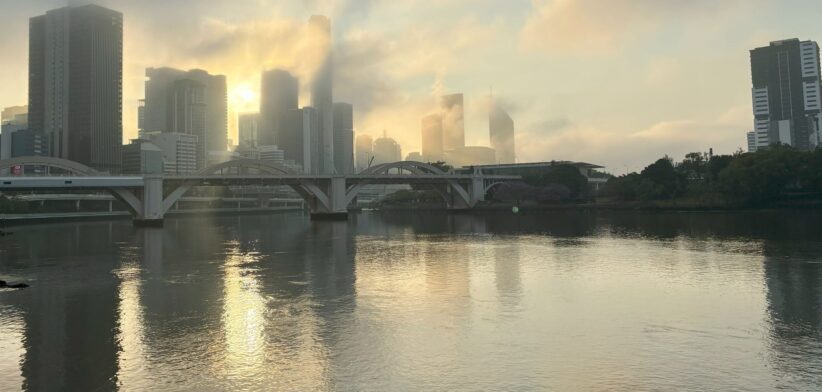By Anthony Cornelius
I’ve tried very hard not to weigh in on the BoM’s new website rollout, but after the flood of emails and messages from people who were caught unaware by the supercell that carved a path of destruction through Brisbane and Ipswich yesterday, there’s a few things that need to be said.
The messages all were connected to three major issues with the website:
- The new radar on the BoM website underestimated the intensity of the storm resulting in people unaware of the storm’s true strength.
- The new radar on the BoM website was ‘lagging’ – many saying that the storm was well and truly over them well before the BoM website said it was.
- The new design meant that they couldn’t find the information they needed to when they needed it.
Starting with the third point – it beggars belief that the BoM would roll out such a significant change to an essential infrastructure service just as the main storm season is about to start.
Historically, late October sees a significant increase in storm activity, so it’s not unforeseen that a major storm would occur in the last week of October. The decision to push the site live on October 22 made no sense at all. It takes time for people to get used to a new site and learn where everything is.
For many people, they would have only accessed the new site for the first time yesterday (just 5 days after the official rollout) to try and get radar and warning information – only to find they couldn’t find what they needed.
The October 22 implementation also caught us out too at work (at Weatherwatch). The BoM said that it was “subject to weather conditions.” In the past 25 years working as a meteorologist, I’ve NEVER seen the BoM do an update or upgrade during a major severe weather event.
Given the passage of a low bringing widespread damaging winds to Victoria and Melbourne, we simply assumed it was going to be postponed – it wasn’t. What’s worse, is our team had a set of various links to the BoM site – using these actually caused our main office to be ‘banned’ from accessing the BoM site. While we have our own internal tools we use, it meant there was a period we had clients asking us about warnings in Victoria we couldn’t access from the BoM site.
In essence, the new website should only have been pushed live during a climatologically quiet and stable time of the year (which is a challenge given severe weather can occur at anytime of year in Australia, but late October is not the date you choose).
Further – there’s been very little information or ‘training’ materials offered to the public on how to use the new website. This should have been available months prior to the rollout of the website for people, with a targeted advertising campaign advising what was going to change. The beta website kept all the functionality of the new website because it was linking directly to the old site and gave many people (including myself) the false impression that these things were not changing when they were absolutely different.
This brings me to the first point many people have made to me. YES the new radar is VERY different to the old radar in the intensity it will show. This is because the default is no longer “dbz” (radar measurement units) and is now “mm/hr.” Why is this important? It’s a bit like rather than your speedo telling you the speed you’re driving, it’s now telling you how long it will be until you get there.
Sound useful? It is and it has its place – the problem is one is a physical unit of measurement and the other is an estimation (mm/hr is an estimation in this case). Not to mention, the colours are different – it may have worked better if the highest dbz value on the BoM radar was the same colour as the highest mm/hr measurement on the radar.
What’s more, the radar defaults to mm/hr meaning you need to keep changing it to dbz if you want to see what it looked like in its more ‘original’ form. And now, I’ve heard from many (understandably) frustrated people who say they would have taken more action, but didn’t based on what the radar looked like! You cannot make a major change like this without letting people know, especially when you take the stance “it’s the same, everything is there.”
To rub salt into the wounds, the rollout of the new website and format meant that many mobile apps that people used to access radar stopped working so they were unable to use these.
Lastly (and admittedly something I can’t comment on as readily), is many people have commented the radar on the new website is “lagging” behind real time. It’s very difficult to tell, because as best I can tell (unless it’s buried somewhere), the radar doesn’t tell you the time the image it was taken, only how many minutes ago the image was taken which is highly ambiguous.
If there’s one thing people need with severe weather is certainty of information. They need to be certain that the information they have been provided is timely and accurate. If they can’t look at the radar and trust that the image is updated at a certain time (with a timestamp), and that its output is correct – they’re not going to trust anything else that comes from the website including any warnings.
And this is the foundation of the problem. The new data and formats provided on the BoM’s website have removed the certainty and confidence of many for those who would normally use it. People who would look at the radar and then place their car under cover, or think they’ve got enough time to drive home before the storm, or think that the storm isn’t “too bad” because it’s not showing the colours they normally associate with.
Website layout aside (though for transparency, I sit in the very much ‘hate it’ camp, but that’s just my opinion, I understand some people love it too – that’s just what makes us all unique). You cannot change a major resource in the middle of storm season or during the middle of a severe weather (or active weather event). Nor can you change the effective output of an essential tool like the BoM radar, or leave people in limbo wondering when the actual radar image they’re looking at was really taken.
I have many great friends at the BoM who’s passion and selfless dedication to Australian weather is nothing short of inspiring. This is not targeted at them (and I know through conversations, many of them will agree with the concerns raised here).
I’ve already logged my feedback, and I really hope that these issues are addressed ASAP (particularly around the radar) so that Australian’s have access to the best information possible for them to make informed decisions on.
– Anthony Cornelius is the Managing Director at Weatherwatch.
This article was first posted on LinkedIn and the views expressed in the post are his own opinion.








